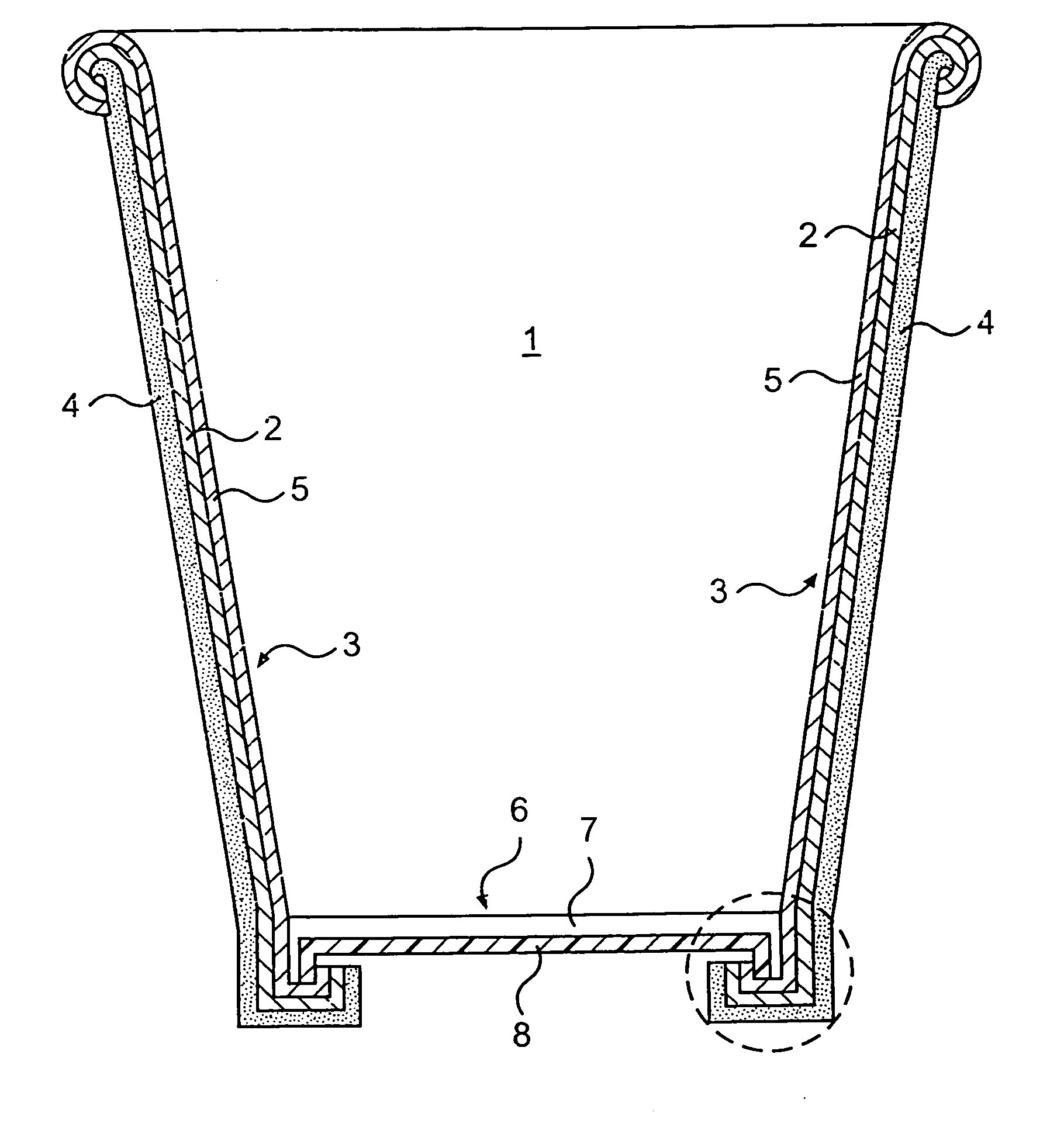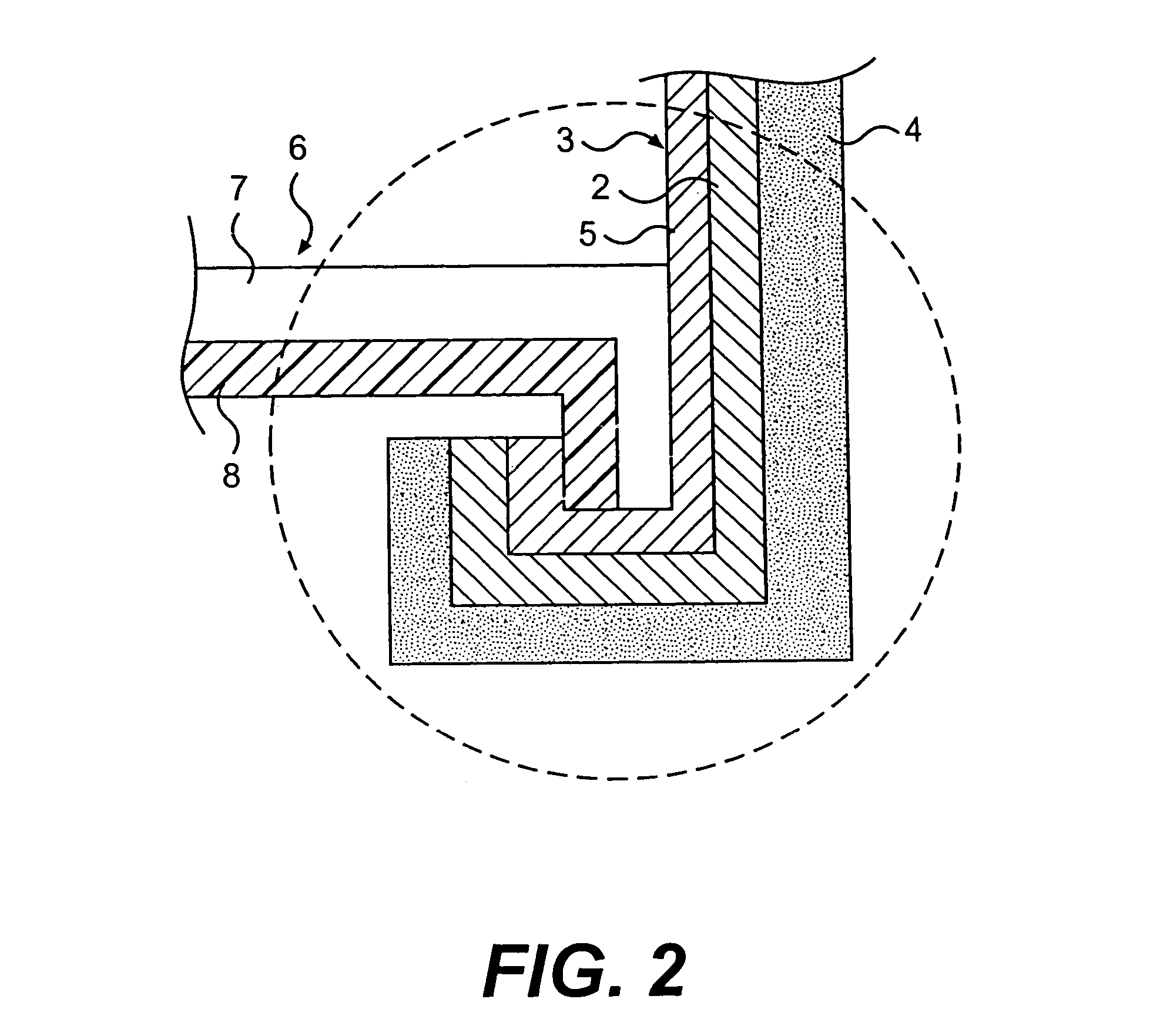Heat insulating paper cups
- Summary
- Abstract
- Description
- Claims
- Application Information
AI Technical Summary
Benefits of technology
Problems solved by technology
Method used
Image
Examples
example 1
[0038]Sidewalls for heat insulating paper cups were fabricated with their inside surfaces coated with Chevron PE 4517 low density polyethylene blended with varying amounts of Eastman M2004-P high density polyethylene. For purposes of comparison, one sample was prepared using an inside coating of 100% Eastman M2004-P high density polyethylene, and one sample was prepared using an inside coating of 100% Chevron PE 4517 low density polyethylene. The melting point for the polyethylene components present in each inside surface coating was determined using differential scanning calorimetry (DSC).
[0039]Each sidewall sample was heat treated for about 1.5 minutes using a conventional production oven at 270° F. (132° C.). The samples were then examined to determine whether foaming occurred on the inside surface of the sidewall.
[0040]
MELTINGSURFACESAMPLEPOINT (° C.)FOAMING?100% HDPE131NO60 / 40% LDPE / HDPE107 / 125NO70 / 30% LDPE / HDPE107 / 124NO80 / 20% LDPE / HDPE107 / 125NO90 / 10% LDPE / HDPE107 / 123NO100% LDP...
example 2
[0041]The heat sealabilities were evaluated for 1 inch wide polyethylene coated paper board samples prepared according to Example 1. For each test, the coated side of a sidewall sample was placed in contact with a control bottomstock coated with Chevron 4517 low density polyethylene, and a seal was effected using a Sentinel Heat Sealer Model No. 12ASL (serial no. 12-1120) available from Packaging Industries, Inc. of Hyannis, Mass. One inch sealing bars covered with Teflon tape were used to effect the seals at a temperature of 300° F. (149° C.) for the top and bottom bars; a jaw pressure of 40 psi; and a dwell time of 0.6 second.
[0042]The strengths of the heat sealed samples were then tested using an Model 4202 Instron Tensile Tester available from Instron Corp. of Canton, Mass. Each sealed sample was peeled apart at a 180° angle at a crosshead speed of 1 inch per minute. The peeled samples were then inspected to determine whether the joint failed to exceed the strength of the board ...
PUM
| Property | Measurement | Unit |
|---|---|---|
| Temperature | aaaaa | aaaaa |
| Temperature | aaaaa | aaaaa |
| Length | aaaaa | aaaaa |
Abstract
Description
Claims
Application Information
 Login to View More
Login to View More - R&D
- Intellectual Property
- Life Sciences
- Materials
- Tech Scout
- Unparalleled Data Quality
- Higher Quality Content
- 60% Fewer Hallucinations
Browse by: Latest US Patents, China's latest patents, Technical Efficacy Thesaurus, Application Domain, Technology Topic, Popular Technical Reports.
© 2025 PatSnap. All rights reserved.Legal|Privacy policy|Modern Slavery Act Transparency Statement|Sitemap|About US| Contact US: help@patsnap.com



